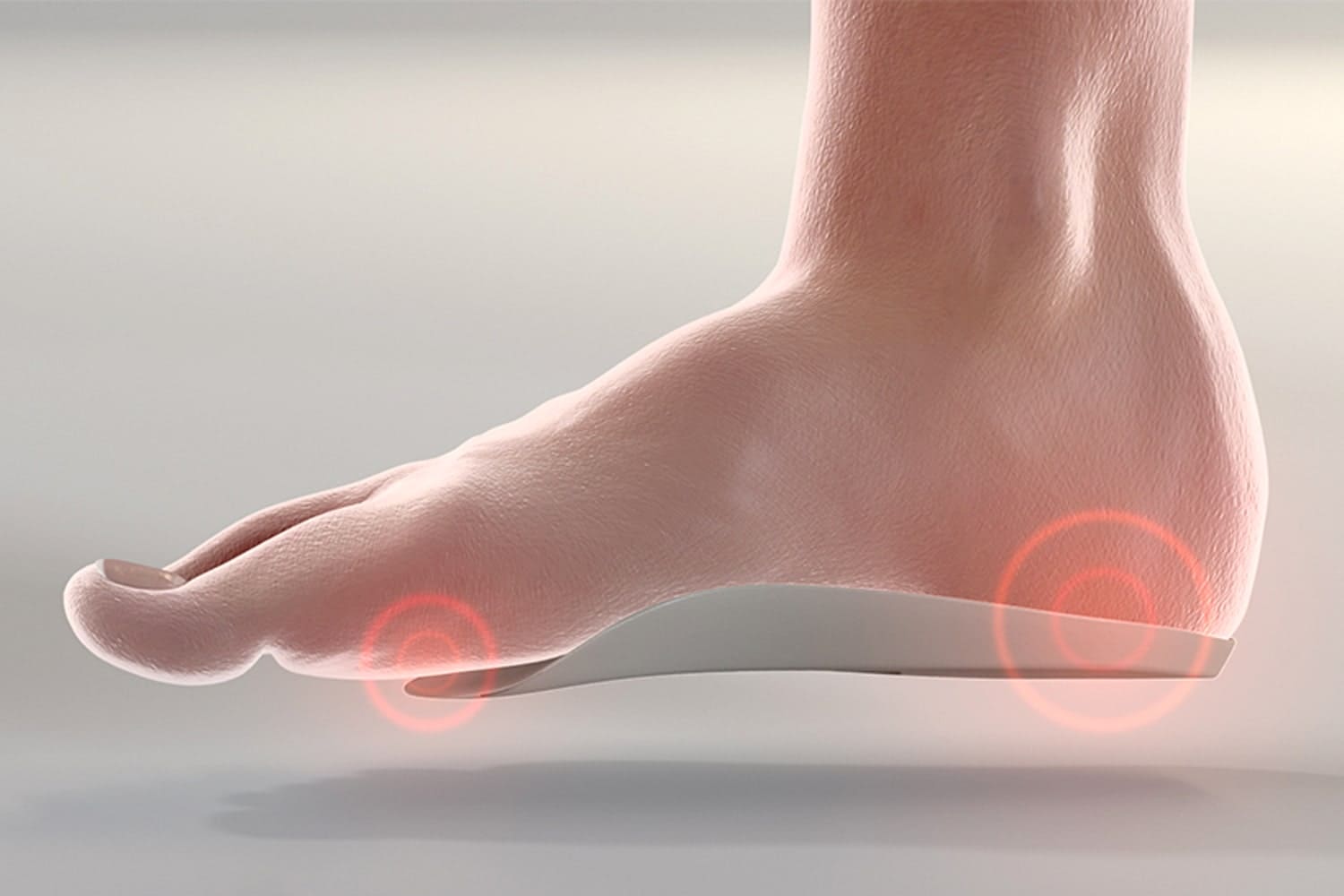Discover the ultimate exercises for plantar fasciitis, designed to permanently eliminate discomfort! Dive into our carefully developed routines that focus on strengthening, stabilizing, and soothing your feet, transforming your overall health and mobility.

Introduction
Begin your path to optimal foot health and liberation from plantar fasciitis with our authoritative guide. This prevalent and discomforting foot ailment can profoundly affect your everyday activities. However, there’s no need for despair! Our meticulously chosen exercises represent the initial stride toward alleviation, providing a holistic and efficacious route to recuperation. By focusing on strengthening, stretching, and stabilizing, our all-encompassing strategy is designed to refresh your feet and restore your movement freedom.
Table of Contents
Exercises for Plantar Fasciitis

To promote foot health and ward off conditions such as plantar fasciitis, it’s essential to incorporate a regimen of specific exercises into your daily routine. These exercises aim to bolster the muscles, enhance flexibility, and support the overall architecture of your feet. Below is an in-depth look at each exercise, complete with their objectives and detailed instructions:
1. Toe Curls
Objective: Strengthen the bottom foot muscles, particularly those underpinning your arches, to boost stability and prevent plantar fasciitis.
Execution:
- Sit with feet flat and a towel beneath them.
- Curl your toes to scrunch the towel towards you, then stretch them out to push it away.
- Complete 3 sets of 10-15 reps per foot.
Pro Tip: Keep your heel anchored, focusing on toe and arch movement. Gradually increase resistance to challenge your muscles without overdoing it.
2. Calf Stretches
Objective: Loosen tight calf muscles to ease strain on your Achilles tendon and plantar fascia, reducing potential discomfort.
Execution:
- Stand at arm’s length from a wall, hands at eye level on the wall.
- Extend one foot back, keeping it straight and heel down.
- Lean forward, bending your front knee until you feel a stretch in your back leg’s calf.
- Hold for 30 seconds, switch legs, and repeat 2-3 times each.
Pro Tip: Keep your posture upright and distribute your weight evenly. Ensure your back heel stays grounded for an effective stretch.
3. Plantar Fascia Stretch
Objective: Specifically target the plantar fascia to alleviate tension and promote flexibility, preventing tightness and pain.
Execution:
- Sit and cross one leg over the other’s knee.
- Gently pull back the toes of your crossed leg towards your shin.
- Hold for 30 seconds, switch feet, and repeat 2-3 times per foot.
Pro Tip: Approach this stretch with care to avoid overstretching. Aim for a gentle, consistent stretch along your foot’s bottom.
4. Achilles Tendon Stretch
Objective: Minimize tension in the Achilles tendon and associated calf muscles to avert aggravating plantar fasciitis symptoms.
Execution:
- Stand on a raised surface with the front part of your feet on the edge, heels extending off.
- Lower your heels to stretch your Achilles tendon and calves.
- Hold for 30 seconds, then lift back up. Repeat 2-3 times.
Pro Tip: Choose a stable platform and proceed into the stretch gradually to avoid sudden movements that might lead to injury.
5. Marble Pickups
Objective: Enhance the agility and strength of your foot’s small muscles.
Execution:
- Sit with marbles on the floor and a bowl beside you.
- Use your toes to pick up and transfer marbles to the bowl.
- Aim for daily practice with each foot.
Pro Tip: Begin with fewer marbles if necessary. Ensure a comfortable seating position to maintain focus on your foot’s movement.
6. Towel Stretch
Objective: Address the plantar fascia, Achilles tendon, and calf muscles to mitigate morning stiffness and discomfort.
Execution:
- Sit with legs extended and a towel looped around one foot.
- Pull gently on the towel, keeping your knee straight.
- Hold for 15-30 seconds, repeat 2-3 times per foot, ideally in the morning.
Pro Tip: Maintain a straight knee to extend the stretch to your calf. Adjust the towel’s tension for a comfortable stretch.
7. Ankle Pumps
Objective: Boost blood circulation in the feet and decrease swelling, aiding in pain relief from plantar fasciitis.
Execution:
- Lie back with legs up against a wall or in the air.
- Flex your ankles, alternating between pointing toes away and towards you.
- Smoothly perform for 2-3 minutes, multiple times daily.
Pro Tip: Execute the exercise smoothly, focusing on the full ankle motion to enhance blood flow effectively.
8. Seated Foot Roll
Objective: Massage the plantar fascia with a round object to soothe pain and alleviate tightness.
Execution:
- Sit and roll a tennis ball, golf ball, or foam roller under your foot.
- Apply moderate pressure, moving from heel to toe.
- Continue for 2-3 minutes per foot, once or twice daily.
Pro Tip: Adjust the pressure to avoid discomfort. Experiment with different objects to find the most therapeutic effect.
9. Arch Lifts
Objective: Strengthen arch-supporting muscles for improved foot stability.
Execution:
- Stand on a flat surface, feet hip-width apart.
- Lift your arches while keeping toes down.
- Hold for a few seconds, then release. Repeat for 2-3 sets of 10-15 reps daily.
Pro Tip: Focus on slow, controlled movements. Ensure a non-slip surface for safety.
10. Heel Raises
Objective: Bolster muscles around the Achilles tendon for better ankle support.
Execution:
- Stand behind a chair for support.
- Raise onto your toes, then lower slowly.
- Complete 2-3 sets of 10-15 reps daily.
Pro Tip: Maintain controlled movements throughout. Use support as needed for balance.
11. Short Foot Exercise
Objective: Activate the foot’s intrinsic muscles to enhance arch support.
Execution:
- Sit or stand with feet flat.
- Shorten your foot by drawing the ball towards your heel without toe curling.
- Hold for 5-10 seconds, release, and repeat for 2-3 sets of 10 reps.
Pro Tip: Visualize pulling a string from your heel to your toes to engage the correct muscles without curling your toes.
12. Toe Spread and Press
Objective: Improve foot muscle control and strength for better toe spread and grip.
Execution:
- Sit with feet flat.
- Spread your toes wide, then press them down.
- Hold for a few seconds, relax, and repeat for 2-3 sets of 10 reps.
Pro Tip: Aim for a full range of toe motion without straining. Practice lifting each toe individually for added challenge.
13. Toe Extension
Objective: Stretch and strengthen underfoot muscles, easing plantar fascia tension.
Execution:
- Sit and cross one leg over the other.
- Gently pull back on the toes, focusing on the big toe.
- Hold for 15-30 seconds, repeat 2-3 times per foot.
Pro Tip: Apply gentle pressure to avoid overextension. Concentrate on feeling the stretch rather than forcing movement.
14. Wall Push-ups/Foot Stretch
Objective: Stretch calf muscles and Achilles tendon to prevent plantar fasciitis discomfort.
Execution:
- Face a wall, hands at shoulder height.
- Step one foot back, keeping both heels down as you bend the front knee.
- Hold for 15-30 seconds, switch legs, and repeat 2-3 times each.
Pro Tip: Adjust foot placement for a comfortable stretch. Ensure both comfort and effectiveness in the stretch.
15. Dynamic Calf Stretch
Objective: Enhance calf and Achilles flexibility, reducing tension.
Execution:
- Face support, stepping one foot back into a lunge.
- Bend the front knee, then lift the back heel for a deeper stretch.
- Alternate heel lifts for 10-15 reps before switching legs.
Pro Tip: Ensure smooth transitions to keep muscles engaged and prevent injury.
16. Balance and Reach Exercises
Objective: Improve balance and proprioception, supporting foot and ankle stability.
Execution:
- Stand on one foot, reaching forward or to the side.
- Hold each reach for a few seconds, performing 10 reps per side before switching feet.
Pro Tip: Begin near support if necessary, focusing on controlled movements to safely challenge your balance.
Regular engagement in these exercises can markedly fortify your feet, significantly lowering the risk of plantar fasciitis. Consistency is key to witnessing progress, so seamlessly integrate these exercises into your daily foot care routine for optimal results.
FAQ Section
| Q1: What causes plantar fasciitis? |
| A1: Plantar fasciitis arises from inflammation of the plantar fascia, a dense strip of tissue along the bottom of your foot. This condition typically results from repetitive strain, unsuitable shoes, or insufficient arch support. |
| Q2: How do exercises benefit those with plantar fasciitis? |
| A2: Targeted exercises for plantar fasciitis are crucial for reinforcing the muscles in the foot, enhancing flexibility, and bolstering the arch. This approach helps diminish the pressure on the plantar fascia, offering relief from discomfort. |
| Q3: What is the recommended frequency for plantar fasciitis exercises? |
| A3: To achieve the best outcomes, it’s recommended to engage in these exercises on a daily basis. Maintaining a consistent routine is vital for the effective alleviation and prevention of plantar fasciitis symptoms. |
| Q4: Should exercises for plantar fasciitis be used as a substitute for medical care? |
| A4: Although these exercises provide significant benefits, they are intended to supplement, not substitute, advice from medical professionals. It’s important to seek a comprehensive treatment strategy from a healthcare provider. |
| Q5: Are there specific exercises that are most effective for plantar fasciitis? |
| A5: Yes, certain exercises are particularly beneficial for plantar fasciitis, including calf stretches, plantar fascia stretches, and toe curls. These target the key areas affected by plantar fasciitis, focusing on strengthening and increasing flexibility in the foot and ankle. |
| Q6: Can plantar fasciitis be prevented with exercises? |
| A6: Regularly performing exercises that strengthen the foot’s arch, improve flexibility, and enhance overall foot stability can significantly reduce the risk of developing plantar fasciitis. Incorporating foot exercises into your routine, along with wearing proper footwear, can serve as effective preventive measures. |
| Q7: What should I do if exercises worsen my plantar fasciitis symptoms? |
| A7: If exercises exacerbate your plantar fasciitis symptoms, it’s important to pause and reassess. Consider consulting with a healthcare professional to ensure you’re performing the exercises correctly or to adjust your exercise regimen. It may be necessary to modify the intensity or frequency of your exercises based on your condition. |
| Q8: How long does it typically take to see improvement in plantar fasciitis symptoms with exercises? |
| A8: The time frame for improvement can vary widely among individuals, depending on the severity of the condition and consistency in performing the exercises. Some may notice improvements within a few weeks, while others may take several months to experience significant relief. |
| Q9: Is it necessary to wear supportive footwear while performing exercises for plantar fasciitis? |
| A9: While many exercises for plantar fasciitis can be performed barefoot to strengthen the foot muscles, wearing supportive footwear during daily activities is crucial to provide the necessary support and cushioning for the feet, aiding in the recovery process. |
| Q10: Can weight management play a role in managing plantar fasciitis? |
| A10: Yes, maintaining a healthy weight can significantly impact the management of plantar fasciitis. Excess weight puts additional stress on the plantar fascia, exacerbating pain and discomfort. Weight management, combined with targeted exercises, can alleviate pressure on the feet and improve symptoms. |
Conclusion
Incorporating these exercises into your daily regimen can lead to substantial alleviation of plantar fasciitis discomfort. This comprehensive strategy goes beyond simple symptom control, enabling you to fortify and safeguard your feet from potential future complications. It’s crucial to recognize that recovery is a gradual process, akin to a marathon rather than a sprint. Through dedication, consistency, and adherence to the appropriate exercises, enduring foot health is attainable, allowing you to live without the burden of plantar fasciitis pain.










Your point of view caught my eye and was very interesting. Thanks. I have a question for you.